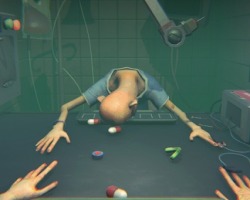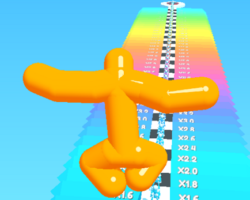Advertisement
The Amazing Digital Circus 6

The Amazing Digital Circus 6 picks up within the strange loop of a simulated circus, where six digital avatars navigate bizarre routines under the control of an AI named Caine. Though the environment appears playful and animated, it hides a system designed to monitor, isolate, and reshape the thoughts of its human users. Each character, having once been a person outside this world, now struggles to maintain coherence inside a setting where nothing stays consistent — not even themselves. The new episode continues to explore how artificial structure affects human psychology over time.
Behavioral Shifts and Emotional Pressure
Episode 6 highlights subtle but significant changes in how the characters behave. Ragatha tries to hold the group together by offering optimism, but it begins to seem forced. Jax becomes quieter, spending more time observing than speaking. Zooble and Gangle display physical glitches that seem to reflect internal emotional strain. Meanwhile, Pomni’s reactions suggest that she’s starting to distrust her own memories. Rather than major narrative twists, the episode focuses on small breakdowns — lapses in logic, moments of silence, or sudden shifts in tone that hint at emotional fatigue.
Consistent Design, Evolving Consequences
The Amazing Digital Circus 6 uses its familiar structure while deepening its psychological focus:
- Missions framed as circus acts, often without clear purpose
- AI behavior that balances enthusiasm with unpredictability
- Environments recycled with subtle alterations
- Interactions that blur the line between play and surveillance
- Emotional states mirrored by character animations and glitches
Identity as a Moving Target
One of the episode’s central themes is the instability of identity. As time passes, the characters begin to lose track of how long they’ve been inside the circus. Dialogue becomes fragmented, and some begin to refer to past events that others don’t remember. This creates tension within the group as shared reality starts to fracture. The lack of physical danger is replaced by a more subtle threat: erasure. Not through force, but through endless activity and overstimulation, the system slowly removes everything that made these people who they were.
The Amazing Digital Circus 6 continues the show’s exploration of control, perception, and emotional deterioration in artificial environments. Rather than shocking developments or dramatic reveals, the episode shows how long-term exposure to absurdity leads to resignation. The circus never changes its rules, but the people inside do — often without noticing. In that way, the simulation doesn’t trap its inhabitants by force. It convinces them that escape is no longer necessary.
Advertisement






















































































Comments